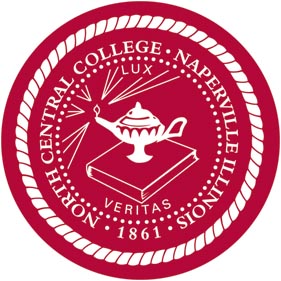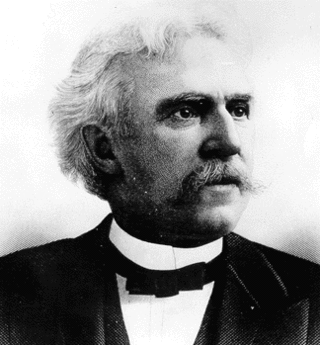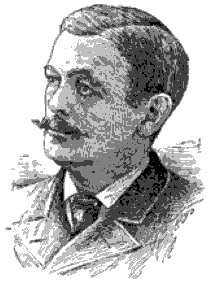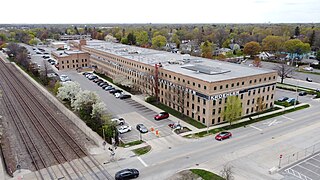
DuPage County is a county in the U.S. state of Illinois, and one of the collar counties of the Chicago metropolitan area. As of the 2020 census, the population was 932,877, making it Illinois' second-most populous county. Its county seat is Wheaton.

Naperville is a city within the Chicago Metropolitan Area in DuPage and Will counties in the U.S. state of Illinois. It is a western suburb of Chicago located 28 miles (45 km) west of the city.

Wheaton is a city in Milton and Winfield Townships and is the county seat of DuPage County, Illinois, United States. It is located approximately 25 miles (40 km) west of Chicago. As of the 2020 census, Wheaton's population was 53,970, making it the 27th most populous municipality in Illinois.

Yorkville is a city within the Chicago Metropolitan Area and is the county seat of Kendall County, Illinois, United States. It is a southwest suburb/exurb of Chicago, Illinois. The population was 22,594 as of the 2020 census.

Plainfield is a village in Will and Kendall counties, Illinois, United States. The population was 44,762 at the 2020 census.

North Central College is a private college in Naperville, Illinois. It is affiliated with the United Methodist Church and has nearly 70 areas of study in undergraduate majors, minors, and programs through 19 academic departments organized in three undergraduate colleges/schools and a masters program.

The Illinois Technology and Research Corridor is a region of commerce and industry located along Interstate 88 in the Chicago metropolitan area, primarily in DuPage, Kane, and DeKalb Counties. The corridor is home to the headquarters or regional centers for many Fortune 1000 companies, several office and industrial parks, colleges and universities, research and scientific institutions, medical centers, government centers, and abundant shopping, dining, lodging, and entertainment amenities. In addition to the I-90 Golden Corridor, the I-94 Lakeshore Corridor, and the I-55 Industrial Corridor, the Illinois Technology and Research Corridor is one of the principal economic centers in suburban Chicago.

Elijah E. Myers was a leading architect of government buildings in the latter half of the 19th century, and the only architect to design the capitol buildings of three U.S. states, the Michigan State Capitol, the Texas State Capitol, and the Colorado State Capitol. He also designed buildings in Mexico and Brazil. Myers' designs favored Victorian Gothic and Neo-Classical styles, but he worked in other styles as well.
Millburn is a former unincorporated community in Lake Villa Township and Newport Township, Lake County, Illinois, United States. Millburn is located at the junction of U.S. Route 45 and County Routes A10 and A14; it lies within the village of Old Mill Creek and borders Lindenhurst to the west. It is 5 miles (8 km) south of the Illinois-Wisconsin state border and 10 miles (16 km) west of Waukegan.

William Nichols, Sr. was an English-born architect who emigrated to the United States and became most famous for his early Neoclassical-style buildings in the American South. He designed statehouses for North Carolina, Alabama and Mississippi.

Elbridge Boyden (1810–1898) was a prominent 19th-century American architect from Worcester, Massachusetts, who designed numerous civil and public buildings throughout New England and other parts of the United States. Perhaps his best known works are the Taunton State Hospital (1851) and Mechanics Hall (1855) in Worcester.

The Dundee Township Historic District is a set of sixty-five buildings in Dundee Township, Kane County Illinois. Buildings in the district are found in East Dundee, West Dundee, and Carpentersville. The district represents the development of the upper Fox River Valley from 1870 to the 1920s. Dundee Township became an important industrial area, especially following the construction of the Dundee Brick Company in West Dundee and the Illinois Iron and Bolt Company in Carpentersville. Also included in the district are a variety of Queen Anne, Italianate, and Greek Revival style houses and Gothic Revival churches. The majority of the historic district lies within the boundaries of West Dundee. It was added to the National Register of Historic Places in 1975.
Wilfred E. Mansur (1855–1921) was the most prominent architect in late 19th and early 20th century Bangor, Maine.
Shattuck and Hussey was a Chicago-based architectural firm founded by Walter F. Shattuck (1871-1948) and Harry Hussey.

Milton Earle Beebe was an American architect who designed numerous buildings in Buffalo, New York, in Fargo, North Dakota, and elsewhere. He designed courthouses "at Warren, Smethport, Cambria, and Huntingdon in Pennsylvania, costing $100,000 each." Several are listed on the National Register of Historic Places. He also designed Early Commercial architecture buildings, residences, churches and public buildings.

Gurdon P. Randall was an architect in Chicago, Illinois. Early in his career, he studied in Boston, Massachusetts, in the office of Asher Benjamin. He moved to Chicago when he was 30, and practiced there for 34 years, focusing on large institutional architecture. He designed a number of notable buildings, including several that survive and are listed on the National Register of Historic Places.

The Old Nichols Library is a historic building on Washington Street in Naperville, Illinois. The building was designed by Mifflin E. Bell in the Richardsonian Romanesque style. The building served as the original public library for Naperville from its construction in 1897 until 1986, when the library operations moved to the new, modern Nichols Library on Jefferson Avenue in Naperville.

The Pope County Courthouse is a government building in Golconda, the county seat of Pope County, Illinois, United States. The county's third courthouse, it has remained in operation since the early 1870s, making it one of Illinois' oldest buildings currently still used as a courthouse.

The Charlotte Central Historic District is a mixed commercial, residential, and historic district located in the downtown section of Charlotte, Michigan. The district stretches along Cochran Avenue from West McClure Street to south of Henry Street, containing portions of the streets adjacent to Cochran. It was listed on the National Register of Historic Places in 2020.

KroehlerManufacturing Company was a furniture company and was originally incorporated as the Naperville Lounge Company, on March 9, 1893. It was founded by ten original stockholders. In 1896, Peter Kroehler, an employee, offered to purchase the stockholder's interest at its book value. The offer was taken, and at the beginning of 1896 a new group of four partners took over the business. In 1897, the company found a new headquarters next to the C. B. & Q tracks in Naperville IL. On April 6, 1903, Peter Kroehler was made president of the company. On April 1, 1915, the name "Kroehler Manufacturing Company" was adopted, as the company had four factories now operating under various names, which was inconvenient. Kroehler Manufacturing Company later became the world's largest furniture company. During the 1970s, the company started operating at a loss, closing its historic Naperville factory in 1978 and ending its operations in the area. In 1981 Kroehler Manufacturing Company was acquired by the ATR Group of Northbrook, which sold off the furniture plants and the Kroehler name.



























